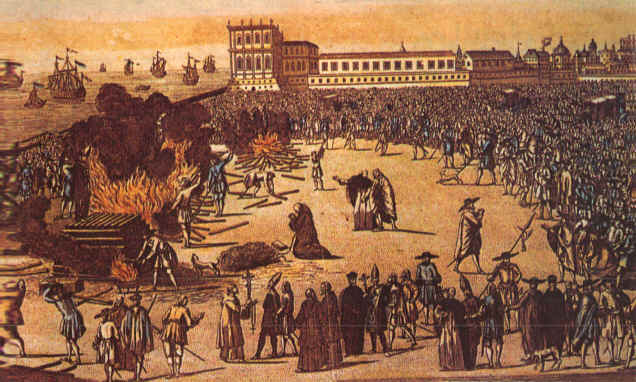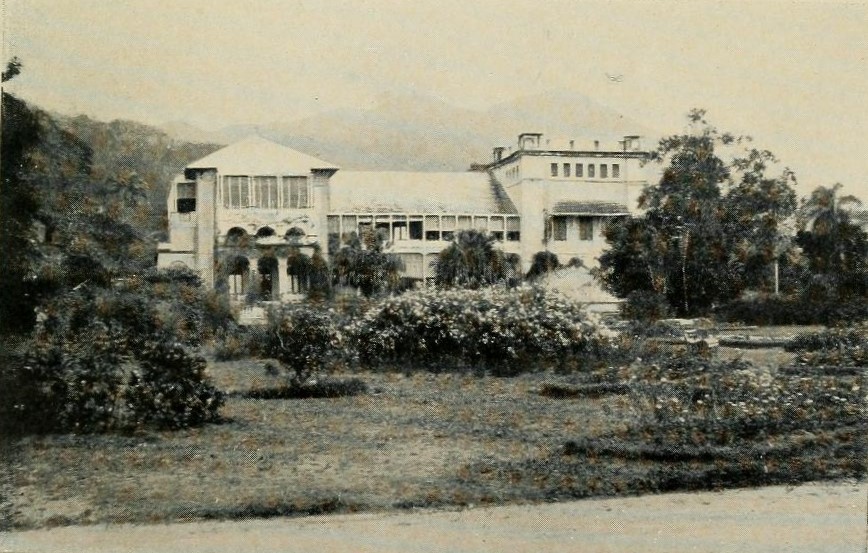|
Demographics Of Trinidad And Tobago
This article is about the demography of the population of Trinidad and Tobago including population density, ethnicity, education level, health of the populace, economic status, religious affiliations and other aspects of the population. Population The total population of Trinidad and Tobago was 1,328,018 according to the 2011 census, an increase of 5.2% since the 2000 census. According to the total population was estimated at in , compared to only 646,000 in 1950. The proportion of children below the age of 15 in 2010 was 20.7%, 71% was between 15 and 65 years of age, while 8.3% was 65 years or older.Population Division of the Department of Economic and Social Affairs of the United Nations Secretariat, World Populati ... [...More Info...] [...Related Items...] OR: [Wikipedia] [Google] [Baidu] |
Trinidad And Tobago
Trinidad and Tobago (, ), officially the Republic of Trinidad and Tobago, is the southernmost island country in the Caribbean. Consisting of the main islands Trinidad and Tobago, and numerous much smaller islands, it is situated south of Grenada and off the coast of northeastern Venezuela. It shares maritime boundaries with Barbados to the northeast, Grenada to the northwest and Venezuela to the south and west. Trinidad and Tobago is generally considered to be part of the West Indies. The island country's capital is Port of Spain, while its largest and most populous city is San Fernando. The island of Trinidad was inhabited for centuries by Indigenous peoples before becoming a colony in the Spanish Empire, following the arrival of Christopher Columbus, in 1498. Spanish governor José María Chacón surrendered the island to a British fleet under the command of Sir Ralph Abercromby in 1797. Trinidad and Tobago were ceded to Britain in 1802 under the Treaty of ... [...More Info...] [...Related Items...] OR: [Wikipedia] [Google] [Baidu] |
Dougla
Dougla people (plural ''Douglas'') are Caribbean people who are of mixed African and Indian descent. The word ''Dougla'' (also Dugla or Dogla) is used throughout the Dutch and English-speaking Caribbean. Definition The word ''Dougla'' originated from doogala (), which is a Caribbean Hindustani word that literally means "two-necks" and may mean "many", "much" or "a mix". In the West Indies, the word is used only for mixed race Afro-Indians. The word has its etymological roots in Hindi, where "do" means "two" and "gala" means "throat," potentially referring to people who could speak Indian and African languages. The 2012 Guyana census identified 29.25% of the population as Afro-Guyanese, 39.83% as Indo-Guyanese, and 19.88% as "mixed," recognized as mostly representing the offspring of the former two groups. In the French West Indies ( Guadeloupe, Martinique), mixed Afro-Indian people used to be called Batazendyen or Chapé-Kouli. History There are sporadic records of Indo-Eu ... [...More Info...] [...Related Items...] OR: [Wikipedia] [Google] [Baidu] |
Indo-Trinidadian And Tobagonian
Indo-Trinidadians and Tobagonians or Indian-Trinidadians and Tobagonians, are people of Indian origin who are nationals of Trinidad and Tobago whose ancestors came from India and the wider subcontinent beginning in 1845. Indo-Trinidadians and Tobagonians are a subgroup of Indo-Caribbeans, which is a subgroup of the wider Indian diaspora. Generally, most Indians in Trinidad and Tobago can trace their ancestry back to northern India, especially the Bhojpur and Awadh region of the Hindi Belt, which lies in the Gangetic plains, a plain that is located between the Ganga and Yamuna rivers and faces the mountain ranges of the Himalayas and the Vindhyas. However, some Indians may trace their ancestry to other parts of South Asia, notably southern India. Indians first arrived in Trinidad and Tobago as indentured laborers from India through the Indian indenture system from 1845 till 1917, and some Indians and other South Asians, along with their families, later came as entrepreneurs, ... [...More Info...] [...Related Items...] OR: [Wikipedia] [Google] [Baidu] |
French People
The French people (french: Français) are an ethnic group and nation primarily located in Western Europe that share a common French culture, history, and language, identified with the country of France. The French people, especially the native speakers of langues d'oïl from northern and central France, are primarily the descendants of Gauls (including the Belgae) and Romans (or Gallo-Romans, western European Celtic and Italic peoples), as well as Germanic peoples such as the Franks, the Visigoths, the Suebi and the Burgundians who settled in Gaul from east of the Rhine after the fall of the Roman Empire, as well as various later waves of lower-level irregular migration that have continued to the present day. The Norse also settled in Normandy in the 10th century and contributed significantly to the ancestry of the Normans. Furthermore, regional ethnic minorities also exist within France that have distinct lineages, languages and cultures such as Bretons in Brittany ... [...More Info...] [...Related Items...] OR: [Wikipedia] [Google] [Baidu] |
Tobago
Tobago () is an List of islands of Trinidad and Tobago, island and Regions and municipalities of Trinidad and Tobago, ward within the Trinidad and Tobago, Republic of Trinidad and Tobago. It is located northeast of the larger island of Trinidad and about off the northeastern coast of Venezuela. It also lies to the southeast of Grenada. The official bird of Tobago is the cocrico. Etymology Tobago was named ''Belaforme'' by Christopher Columbus "because from a distance it seemed beautiful". The Spanish friar Antonio Vázquez de Espinosa wrote that the Kalina people, Kalina (mainland Caribs) called the island ''Urupina'' because of its resemblance to a big snail, while the Island Caribs, Kalinago (Island Caribs) called it ''Aloubaéra'', supposedly because it resembled the ''alloüebéra'', a giant snake which was supposed to live in a cave on the island of Dominica. The earliest known record of the use of the name ''Tabaco'' to refer to the island is a Spanish royal order is ... [...More Info...] [...Related Items...] OR: [Wikipedia] [Google] [Baidu] |
Madeira
) , anthem = ( en, "Anthem of the Autonomous Region of Madeira") , song_type = Regional anthem , image_map=EU-Portugal_with_Madeira_circled.svg , map_alt=Location of Madeira , map_caption=Location of Madeira , subdivision_type=Sovereign state , subdivision_name=Portugal , established_title=Discovery , established_date=1418-1419 , established_title2=Settlement , established_date2=c. 1425 , established_title3=Autonomous status , established_date3=30 April 1976 , named_for = en, wood ( pt, madeira) , official_languages= Portuguese , demonym= en, Madeiran ( pt, Madeirense) , capital = Funchal , government_type=Autonomous Region , leader_title1=Representative of the Republic , leader_name1=Irineu Barreto , leader_title2= President of the Regional Government of Madeira , leader_name2= Miguel Albuquerque , leader_title3=President of the Legislative Assembly , leader_name3=José Manuel Rodrigues , legislature= Legislative Assembly , national_representation=Nation ... [...More Info...] [...Related Items...] OR: [Wikipedia] [Google] [Baidu] |
Spanish And Portuguese Jews
Spanish and Portuguese Jews, also called Western Sephardim, Iberian Jews, or Peninsular Jews, are a distinctive sub-group of Sephardic Jews who are largely descended from Jews who lived as New Christians in the Iberian Peninsula during the immediate generations following the forced expulsion of unconverted Jews from Spain in 1492 and from Portugal in 1497. Although the 1492 and 1497 expulsions of unconverted Jews from Spain and Portugal were separate events from the Spanish and Portuguese Inquisitions (which were established over a decade earlier in 1478), they were ultimately linked, as the Inquisition eventually also led to the fleeing out of Iberia of many descendants of Jewish converts to Catholicism in subsequent generations. Despite the fact that the original Edicts of Expulsion did not apply to Jewish-origin New Christian '' conversos'' —as these were now legally Christians— the discriminatory practices that the Inquisition nevertheless placed upon them, whi ... [...More Info...] [...Related Items...] OR: [Wikipedia] [Google] [Baidu] |
Port Of Spain
Port of Spain ( Spanish: ''Puerto España''), officially the City of Port of Spain (also stylized Port-of-Spain), is the capital of Trinidad and Tobago and the third largest municipality, after Chaguanas and San Fernando. The city has a municipal population of 37,074 (2011 census), an urban population of 81,142 (2011 estimate) and a transient daily population of 250,000. It is located on the Gulf of Paria, on the northwest coast of the island of Trinidad and is part of a larger conurbation stretching from Chaguaramas in the west to Arima in the east with an estimated population of 600,000. The city serves primarily as a retail and administrative centre and it has been the capital of the island since 1757. It is also an important financial services centre for the CaribbeanCIA World Factbook Tri ... [...More Info...] [...Related Items...] OR: [Wikipedia] [Google] [Baidu] |
White Trinidadian
White Trinidadians and Tobagonians (sometimes Euro-Trinidadians and Tobagonians or local-whites) are Trinidadians of European descent. However, while the term White Trinidadian is used to refer collectively to all Caucasians who are Trinidadian, whether by birth or naturalization, the term local-white is used to refer more specifically to Trinidad-born Caucasians and in particular, those who trace their roots back to Trinidad's early settlers. White Trinidadians and Tobagonians account for less than 1% of the population of Trinidad and Tobago. However, the classification is primarily a superficial description based on phenotypic description opposed to genotypical classification. Most white Trinidadians and Tobagonians are of Portuguese stock. Trinidad and Tobago was colonized by the Spanish, the French and the British. History The first Europeans to discover and settle in Trinidad and Tobago were the Spanish. Trinidad was originally a Spanish colony and was under Spanish rule. ... [...More Info...] [...Related Items...] OR: [Wikipedia] [Google] [Baidu] |
Slavery Abolition Act 1833
The Slavery Abolition Act 1833 (3 & 4 Will. IV c. 73) was an Act of the Parliament of the United Kingdom which provided for the gradual abolition of slavery in most parts of the British Empire. It was passed by Earl Grey's reforming administration and expanded the jurisdiction of the Slave Trade Act 1807 and made the purchase or ownership of slaves illegal within the British Empire, with the exception of "the Territories in the Possession of the East India Company", Ceylon (now Sri Lanka), and Saint Helena. The Act was repealed in 1998 as a part of wider rationalisation of English statute law; however, later anti-slavery legislation remains in force. Background It is important to note the long history of efforts to end or limit the practice of slavery. In 1080, William the Conqueror banned the slave trade between Bristol and Ireland upon the urging of Bishop Wulfstan of Worcester. In 1102, the ecclesiastical Council of London condemned the slave trade within England, decreeing ... [...More Info...] [...Related Items...] OR: [Wikipedia] [Google] [Baidu] |
Slave Trade Act 1807
The Slave Trade Act 1807, officially An Act for the Abolition of the Slave Trade, was an Act of the Parliament of the United Kingdom prohibiting the slave trade in the British Empire. Although it did not abolish the practice of slavery, it did encourage British action to press other nation states to abolish their own slave trades. Many of the supporters thought the Act would lead to the end of slavery. Slavery on English soil was unsupported in English law and that position was confirmed in '' Somerset's case'' in 1772, but it remained legal in most of the British Empire until the Slavery Abolition Act in 1833. Background As British historian Martin Meredith writes, "In the decade between 1791 and 1800, British ships made about 1,340 voyages across the Atlantic, landing nearly 400,000 slaves. Between 1801 and 1807, they took a further 266,000. The slave trade remained one of Britain's most profitable businesses." The Committee for the Abolition of the Slave Trade was ... [...More Info...] [...Related Items...] OR: [Wikipedia] [Google] [Baidu] |



